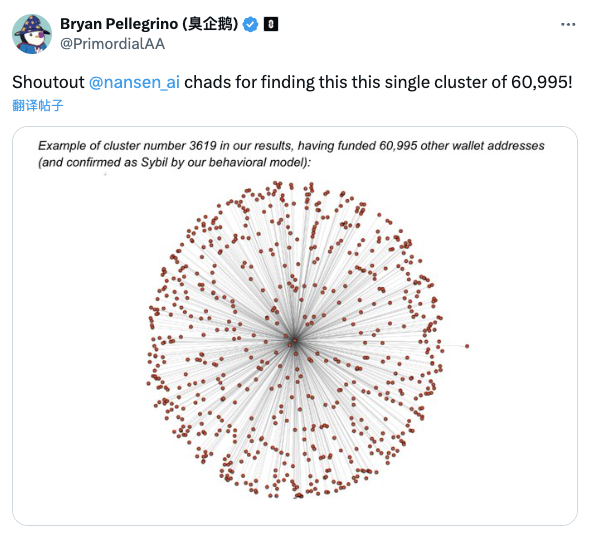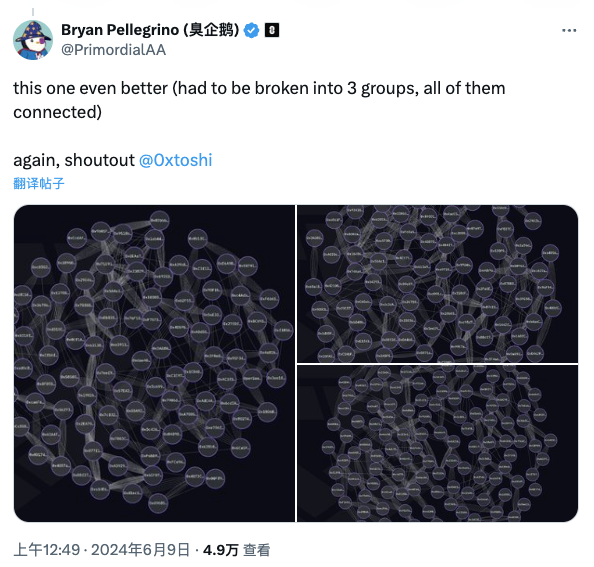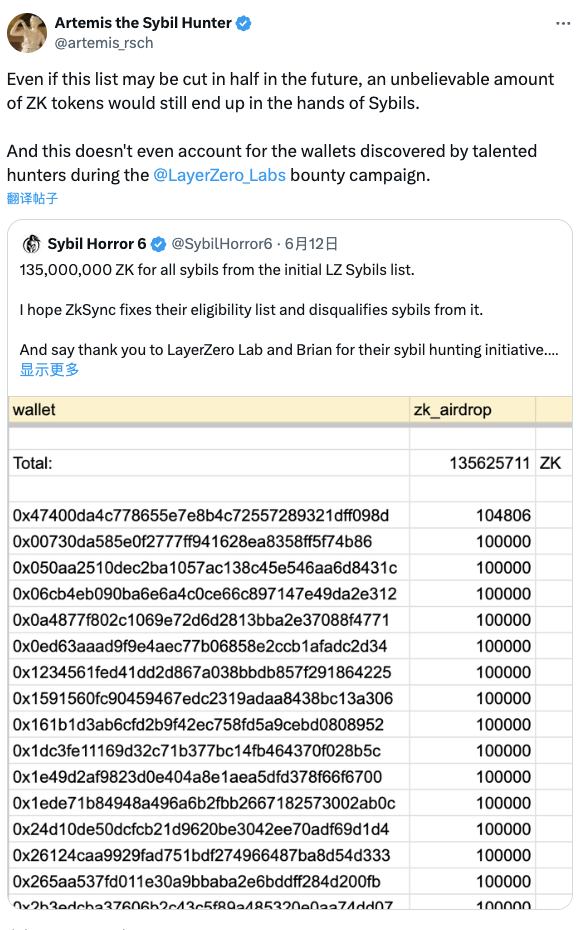The rapid development of blockchain technology is reshaping our lives and business models. As a promotion and incentive mechanism in the blockchain ecosystem, airdrops have received great attention in recent years. However, along with airdrops, there are often various challenges and risks, with the most significant being the Sybil Attack. This article will explore the significance and current status of airdrops, analyze cases such as LayerZero and ZKSync to understand how they are addressing challenges, and discuss the future development direction of airdrop mechanisms.
Why Do Projects Conduct Airdrops?
Blockchain projects choose to conduct airdrops for multiple purposes, laying the foundation for the core position of airdrops in the blockchain ecosystem:
- Increase Visibility and User Engagement: Through airdrops, projects can quickly attract a large number of users, expand the community, and enhance the project's market influence.
- Distribute Token Holdings: Through airdrops, projects can distribute tokens to more users, avoiding token concentration in the hands of a few large holders, thereby increasing the project's decentralization.
- Test Networks and Applications: Through airdrops, projects can encourage users to test, discover, and fix potential issues, improving the quality and user experience of the product.
- Incentivize Early Supporters: Through airdrops, projects can reward early supporters, increasing user loyalty and engagement.
Challenges Faced by Airdrops
As the airdrop mechanism becomes more widespread, project teams also face increasing challenges and potential risks:
- Sybil Attack: Attackers abuse airdrop rewards by creating a large number of false identities, resulting in the rewards intended for real users being distributed among a large number of false accounts.
- Bot Vote Manipulation: Automated tools and scripts (bots) may be used to manipulate voting and obtain airdrops, thereby undermining fairness.
- Abuse of Supervision Mechanism: Malicious users may exploit vulnerabilities in airdrops to attack or manipulate, damaging the healthy development of the project.
LayerZero's Sybil Cleanup Operation
In addressing airdrop challenges, LayerZero's Sybil cleanup operation has become a highly regarded case. They have taken a series of measures to combat Sybil attacks and protect the fairness of airdrops.
On May 4, 2024, LayerZero Labs launched the "Self-Report Sybil Activity" plan. If Sybil addresses self-report relevant addresses on the designated page, they can receive 15% of the expected allocation without answering any questions, with a deadline of May 17, 2024, 19:59:59.
After the self-report deadline, the cleanup operation is divided into two phases. In the first phase, the official list of all identified Sybil users is released, and those identified but not self-reported users will not receive airdrop allocations. In the second phase, the official will open a bounty, and users can submit detailed reports of Sybil activity. Successful reports will result in Sybil users not receiving airdrop allocations, and bounty hunters will receive 10% of the expected allocation of Sybil addresses.
Through these measures, LayerZero successfully identified and screened a large number of potential Sybil addresses, improving the fairness of the airdrop.
Until June 4, 2024, Bryan Pellegrino tweeted that they are reviewing the Sybil reports, and users can submit objections. Although being included in the reported list will amplify the risk of the related address being considered a Sybil, it does not necessarily mean that the address will be judged as a Sybil. The final list of Sybil addresses has not yet been released, and the current reports may be false, and a final screening will be conducted. The final list of Sybil addresses will be announced by the end of June.
Then on June 8, 2024, Bryan Pellegrino tweeted again that Nansen has confirmed 60,995 addresses as a cluster of Sybil addresses:

And a screenshot of some other studio's Sybil addresses:

The Highly Anticipated ZKSync Airdrop Plan
Following LayerZero, ZKSync, as a Layer 2 solution based on zero-knowledge proof (ZK-Rollup) scaling technology, has recently attracted great attention, especially its newly launched airdrop plan. The ZKSync Association will airdrop a one-time 3.6 billion ZK tokens to early users and adopters next week, with 695,232 eligible wallets. The snapshot time is March 24, 2024, and community members can check their eligibility for the airdrop on the https://claim.zknation.io/ website and can claim the airdrop from next week until January 3, 2025.
This airdrop accounts for 17.5% of the total supply of ZK tokens. Users will be able to claim their tokens starting from June 24, 2024, and the claiming period will last until January 3, 2025.
Eligible Users for ZKSync Airdrop
The eligibility and criteria for ZKSync airdrop allocation are very strict to ensure that only genuine users and contributors are rewarded:
- Users (89%): Active ZKSync users who have conducted transactions and reached the activity threshold on ZKSync.
- Contributors (11%): Individuals, developers, researchers, communities, and companies who have contributed to the ZKSync ecosystem and protocol through development, promotion, or education.
Eligibility is based on the ZKSync Era and ZKSync Lite activity snapshot at 00:00 UTC on March 24, 2024.
Distribution Method of ZKSync Airdrop
ZKSync allocates the airdrop based on users' transaction activity and holdings on ZKSync Era and ZKSync Lite:
- Eligibility Confirmation: Each address applying for the airdrop must have at least one point to indicate its activity on ZKSync.
- Allocation Calculation: Airdrop allocation is calculated based on the user's assets on ZKSync Era (including assets in wallets and DeFi) and the holding time of these assets. The maximum airdrop limit per address is 100,000 ZK.
- Multiplier Rewards: Users can also receive allocation multipliers by holding ZKSync native NFTs, participating in DeFi projects, and other activities to reflect their contribution to the ZKSync ecosystem.
Sybil Detection
This airdrop particularly emphasizes Sybil detection to ensure that rewards go to genuine users. ZKSync uses on-chain data analysis and behavior pattern recognition to eliminate Sybil addresses, ensuring the fairness and effectiveness of the allocation.
Interestingly, it did not initiate a large-scale Sybil hunt, but it has been widely criticized as a result. Among the 690,000 addresses receiving the airdrop, not only are the airdrop rules somewhat vague, but there are also multiple Sybil addresses that have already been screened out. According to Sybil hunter Artemis, some front-runners obtained over 2 million ZK tokens by depositing the same amount of Ethereum on the same day, and almost all accounts were flagged on LayerZero's Sybil list.

The Future of Airdrop Mechanisms
The unspoken rules between airdrop hunters and project teams seem to have led to misunderstandings between the two. Many users believe that airdrops are their "earned income," and in a bear market, users work hard to be active, contribute to fees, and help create the illusion of prosperity on the chain, and should receive "compensation." However, these users are more purposeful, and project teams may not fully agree.
The original intention of project teams is not to confront the community but to be more cautious in distributing airdrops after thousands of studios have joined the airdrop army.
The airdrop plans of LayerZero and ZKSync demonstrate the innovative governance measures taken by blockchain projects in the face of challenges such as Sybil attacks. These cases provide valuable experience for the design of future airdrops.
In the current cryptocurrency ecosystem, various airdrop plans still face significant challenges and opportunities. We look forward to more blockchain projects drawing on these successful experiences to design more fair, transparent, and secure airdrop mechanisms, contributing to the healthy development of the entire ecosystem. Whether it is project teams or ordinary users, they should maintain a cautious and innovative attitude in the wave of this new technological revolution, embracing the infinite possibilities in this vast universe.
免责声明:本文章仅代表作者个人观点,不代表本平台的立场和观点。本文章仅供信息分享,不构成对任何人的任何投资建议。用户与作者之间的任何争议,与本平台无关。如网页中刊载的文章或图片涉及侵权,请提供相关的权利证明和身份证明发送邮件到support@aicoin.com,本平台相关工作人员将会进行核查。




